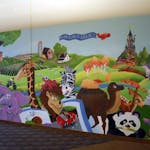The Minnesota Department of Transportation (MnDOT) is recommending that a bridge be built over a dangerous railroad crossing in Anoka where four young people were killed in a car-train crash in 2003.
On Wednesday, the agency released results of a 10-month study outlining recommendations for the bridge on Ferry Street just north of Hwy. 10.
According to MnDOT, about 18,300 vehicles cross the tracks and up to 80 trains traveling at speeds up to 75 miles per hour — an average of one every 24 minutes — pass through the at-grade crossing each day.
With crossing arms down frequently, traffic commonly backups onto nearby Hwy. 10 and sometimes as far back as Bunker Lake Blvd. Occasionally that leads motorists to drive around them, which is a safety concern, MnDOT said.
Additionally, the railroad tracks are higher than Ferry Street and form a hump in the roadway as it crosses the tracks. The crossing also has limited visibility and hidden driveway entrances located too close to the crossing which contribute to driver confusion and difficult or unsafe turning maneuvers when trains are present or approaching.
Using a formula developed by the Texas Department of Transportation to review risks associated with highway-railroad crossings, the Ferry Street crossing was deemed one of the worst in the state, MnDOT said.
The crossing has been the site of major property damage crashes in 1972, 1973, 1976 and 1986, MnDOT said. In 2003, a teen driver collided with a train, resulting in the deaths of Brian Frazier, Corey Chase, Harry Rhoades Jr. and Bridgette Shannon.
The victims' families sued Burlington Northern Santa Fe Railroad, and in 2013, after an 8-year legal battle, received an $29.1 million settlement from the railroad. A jury found the railroad 90 percent responsible for the crash, concluding that the signals failed to operate properly.
The MnDOT study looked at two alternatives. One called for building a bridge over the railroad or lowering the road beneath the railroad alignment. The study concluded that the best option would be a multi-span bridge over the railroad crossing. It would include two travel lanes with a multiuse trail on the east side. The bridge would be designed to allow for construction of an additional two lanes if Hwy. 47 is expanded in the future.
Funding for the bridge has not been secured.
Tim Harlow • 612-673-7768



